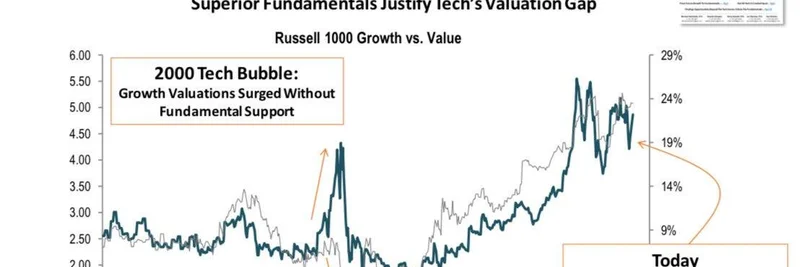In the fast-paced world of markets and crypto, narratives can make or break fortunes. Recently, economist and trader Alex Krüger (@krugermacro) dropped a thought-provoking tweet challenging the popular idea that stocks are trapped in an AI bubble. Drawing parallels—and key differences—to the dot-com era, he argues this is more of a generational gold rush than a speculative frenzy. Let's dive into his take and explore what it means for meme coin enthusiasts in the blockchain space.
Krüger points out that metrics like the S&P's price-to-book ratio surpassing dot-com peaks, the Buffett Indicator hitting all-time highs, and tight credit spreads are fueling bubble fears. These echoes from the past are hard to ignore, especially after the February market dip that had everyone whispering about overvaluations. But he flips the script: that crash wasn't about bubbly prices; it was tied to political rhetoric from Trump, who later softened his stance, shifting toward pro-growth policies that keep the economy humming.
The real kicker? Earnings are exploding. Bears overlooking this surge are missing the plot. Krüger calls it a "generational gold rush" in AI, with a robotics boom hot on its heels. And crucially, he warns against lazy comparisons to the dot-com bubble—today's tech growth has solid fundamentals backing it up.
Take a look at this chart from Piper Sandler that Krüger shared. It plots the relative price-to-book ratio of the Russell 1000 Growth vs Value indexes against their return on equity (ROE) difference. Back in the 2000 tech bubble, growth valuations skyrocketed without much fundamental backing—leading to that infamous crash. Fast-forward to today, and while valuations are high, they're supported by stronger earnings growth. The ROE gap has widened positively, showing tech's profitability isn't just hype; it's real.
For blockchain practitioners and meme token hunters, this is gold. Meme coins thrive on narratives, and AI has been a rocket fuel for projects like those blending humor with tech themes on platforms such as Solana or Ethereum. Think about how tokens inspired by AI concepts—chatbots, neural networks, or even futuristic visions—have pumped during hype cycles. If Krüger's right about the AI gold rush being legit, it could sustain longer rallies in AI-themed meme coins, drawing in more liquidity and community buzz.
But the excitement doesn't stop there. Krüger teases a "robotics gold rush" on the horizon. In crypto terms, this opens doors for new meme narratives around bots, automation, and sci-fi robotics. We've seen early sparks with tokens playing on robot memes or DeFi bots, but a full-blown trend could birth a fresh wave of viral projects. Imagine meme coins tied to robotic companions, AI assistants, or even dystopian robot uprisings—perfect fodder for the degenerate traders chasing the next 100x.
Of course, caution is key. While fundamentals look stronger than in 2000, markets can still overheat. For meme coin players, this means timing entries around sentiment shifts, watching for overextensions, and diversifying beyond pure hype. Tools like on-chain analytics can help spot when a narrative is gaining traction versus fizzling out.
Krüger's perspective reminds us that not all booms are bubbles. In the meme token ecosystem, understanding these macro views can sharpen your edge—turning tech gold rushes into personal windfalls. Keep an eye on AI and robotics developments; they might just be the next big meme meta.



